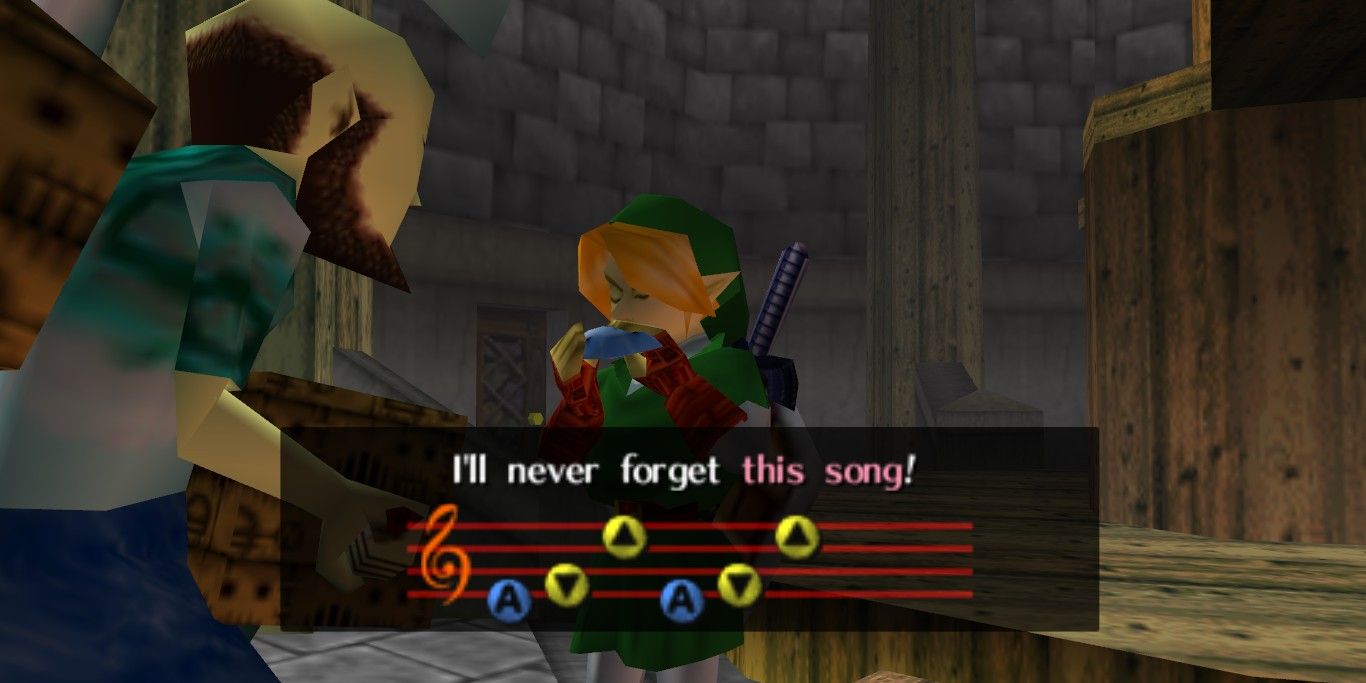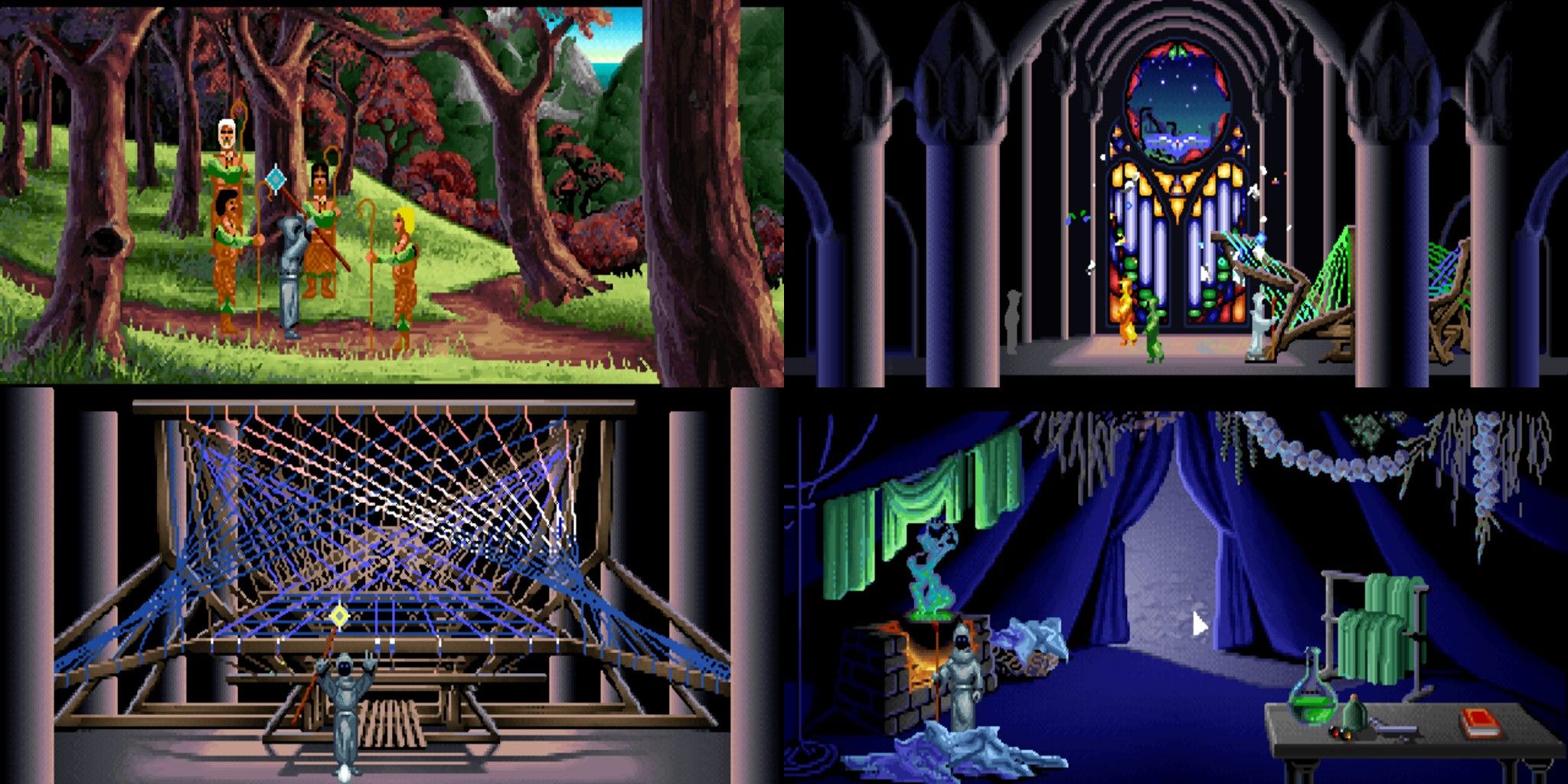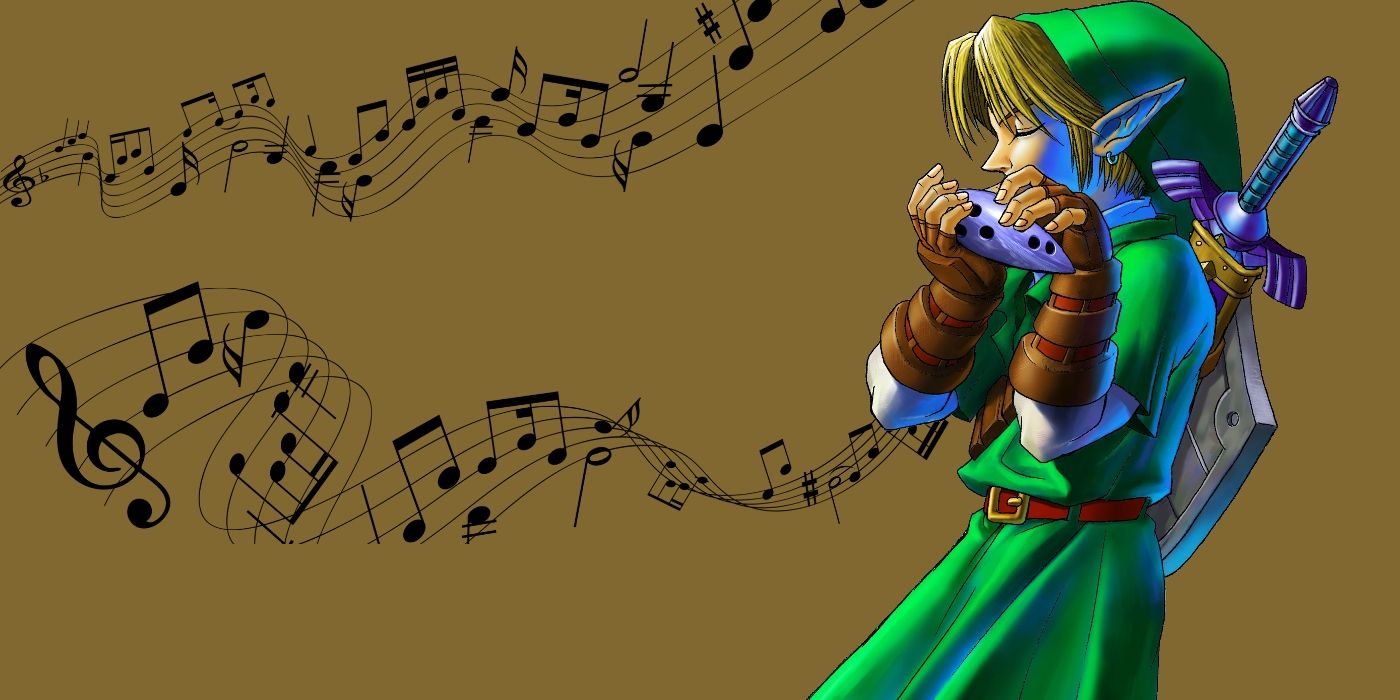Music has long been a huge and welcome part of video games. From standout soundtracks from games like Journey to rhythm games like Rock Band, there are so many ways that music finds its way into games. A stellar game soundtrack instills a lot of love for classic games and is one of the things gamers can connect to on a deeply emotional level, no matter the genre.
One of the most interesting ways music is utilized, however, is as a mechanic. Loom and The Legend of Zelda: Ocarina of Time showcase the wildly interesting yet often unsuccessful and problematic ways that video games have used music as a mechanic.
How Music Drives Story
In 1990, the same year Lucasfilm Games released the well-known Monkey Island, it also released the much smaller and more obscure game, Loom. Set in a fantasy world, Loom tells a lackluster story relying on substantial character knowledge that the player doesn't have a lot of exposition on in the final moments. Where Loom may let players down as a narrative, it offers up an intriguing mechanic for an old-school adventure game. Players might be used to a small vocabulary to define how they can interact with the game world — "pickup," "walk," "talk," etc. — but in Loom, the vocabulary isn't words, but instead small melodies.
Players change the world of Loom by playing these melodies on a magical staff, with lower notes on the left end and higher notes on the right. The four notes that allow them to dye a bunch of wool grass green allows the player to dye a flock of sheep, hiding them from an approaching dragon. Most interestingly, playing the melody in reverse undoes the action; a song that twists up a water spout will untwist it when played in reverse, and one that spins straw into gold can turn a dragon's horde into flammable straw.
The music in Loom shows a novel way of thinking about how players can interact with the in-game world, but the melodies are unfortunately uninteresting. It may even be a stretch to call the four-note themes "music." It's a fun exploration, but ultimately one that's unsuccessful.
Perhaps the most well-known example of music as a mechanic is The Legend of Zelda series. Ocarina of Time is a beloved classic that features many truly novel mechanics beyond just the addition of music. Unlike Loom, though, it also features a lovely and memorable story.
In addition to wielding a sword and bow, Link brandishes the titular ocarina. While players will solve pathfinding puzzles and fight bosses, part of the game also involves playing the right song at the right time. Some of the songs are just for gaining access to a temple, while others have utility within gameplay, such as summoning a player's horse or freezing undead enemies. The player interacts with the rest of the world much like in other games, though, with the game's verbs of "walk" and "fight" linked to regular buttons.
Ocarina of Time and other Legend of Zelda games succeed where Loom fails because they add music-playing to the standard game mechanics, rather than replacing them. While this replacement gave Loom a truly novel feel, it also made the game's controls unintuitive and frustrating. Both of these games, however, demonstrate the potential value of using these aural cues as truly integral game components.
How This Presents Accessibility Issues
Linking the mechanics of a game to sound can pose some problems for accessibility. For the deaf and hard of hearing communities, this aspect of the games can be entirely unapproachable. Without accompanying visual cues, sound alone is not a usable mechanic.
Loom attempts to counter this through the visual component of the music-making staff. Not only are notes located in different physical spaces on the staff, but when clicked, they glow a different color. However, while this may allow players to reproduce a tune based on location or color and not sound, it reduces the melody-based mechanic to visual patterns.
Ocarina of Time tries to make its musical mechanic more accessible than Loom. Notes are presented on a musical staff, but no knowledge of how to formally read music is required. Instead, the notes are color-coded and labeled according to the controller's buttons. Such notation means that the songs in Ocarina of Time can be played even if they can't be heard, but only add additional aural information for players familiar with this notation.
Experimentation with music as an integral game component presents players and developers alike with a whole new range of interface options and gameplay cues. Yet when implemented without due consideration, it can make games inaccessible. These novel mechanics can make gameplay incredibly interesting, but it's important that they're interesting for everybody.



